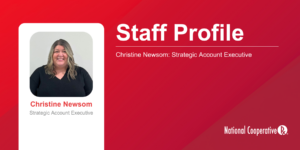At our Annual Meeting in May, we highlighted the National CooperativeRx membership demographics. We assigned each group to an industry for the purpose of comparing utilization and costs to the programs and controls our membership have put in place. We assigned our Taft Hartley, and other health trusts, an industry most appropriate to their membership. Our findings reinforce the value of the recommendations we make to our membership.
Once groups join National CooperativeRx they stay. Membership retention over our 15-year history is 98% and almost half the groups that left were small groups going fully-insured or were acquired by another company and adopted their benefits.
Manufacturing is the most prevalent industry within National CooperativeRx with 62 total members, followed by services (31) and public sector (30).
Cost share is a valuable tool to drive consumerism in plan design. Patient cost share by industry ranged from 8.7% to 13.7%. Public sector and construction industries were the lowest and health care and other services was the highest.
In 2018, National CooperativeRx trend was flat after rebates, one year after our coalition experienced negative trend. We have led the industry for two years compared to PBMs and other coalitions that have released data. Further, our numbers include all National CooperativeRx groups; we don’t exclude groups as is common when reporting trend.
Average gross costs per member life per year net of rebates was $892.56 in 2018 for all National CooperativeRx. Industries with the lowest per member life per year plan costs after rebates were health ($684), manufacturing ($778) and services ($788). Industries on the high end were finance and insurance ($1,084), construction ($962) and science and technology ($934). Wider variation exists within industries, but all industry groups were close to the industry-leading Cooperative average.
Formularies are widely adopted across National CooperativeRx membership. More than 90% of our membership have adopted one of four formulary options to drive generic utilization and lower net costs. We see this adoption across all nine industry buckets with generic dispensing rates higher for each rung up the formulary management ladder a group goes. In 2018, National CooperativeRx achieved a generic dispensing rate of 86.6%, with our best-in-class groups over 90%.
The debate between copay plan design versus coinsurance plan design shows up in our data. Although we recommend coinsurance for its strong elements of consumerism, we understand it’s not for all plans. National CooperativeRx membership is split almost evenly between the two with a slight edge going to those groups that employ copays.
When it comes to specialty, coinsurance has a much higher adoption rate. In fact, two out of every three groups choose coinsurance over copay. Some plans choose to put a specialty maximum threshold in place rather than have specialty spend stop at the out-of-pocket limits.
Programs to manage specialty drug utilization have adoption rates of 100% or close to 100% for all programs. The one exception is the specialty copay coupon card program, first introduced in 2018. This program makes sure members using a copay coupon when filling a specialty medication do not get credit towards their out-of-pocket maximum for money that didn’t come out of their pocket. Assuming coupons continue to be allowed and plan sponsors are not preempted from employing this program, we expect utilization to increase as plan sponsors look for a solution to pharmaceutical companies undermining plan designs.
The clinical differentiators of National CooperativeRx also have near 100% adoption. All members are using our pharmacy fraud, waste and abuse initiatives. Our enhanced formulary management list is in use by over 98% of members. The high dollar review program totals almost 90% of members. We have implemented these programs at no extra cost to member groups and are proud to report these reduced costs across the Cooperative by over $13 million in 2018!
National CooperativeRx membership has been successful managing lowest net cost. I am proud the passion our staff have for working with plan sponsors to control costs shows through. The real accolades go to our membership for implementing these recommendations.
Way to go!




